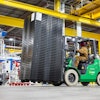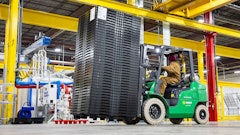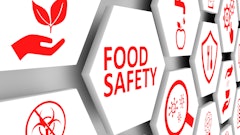
Operational complexity across today’s food manufacturing landscape has never been higher. Between evolving regulatory requirements, aging equipment, and global supply chain volatility, manufacturers face mounting pressure to ensure quality, compliance, and uptime without compromising speed to market. Recent high-profile food recalls have only added urgency to this mission, highlighting just how costly and dangerous lapses in risk management can be. A single misstep can ripple across the value chain, affecting not only production lines but also brand reputation, retail relationships, and customer loyalty. As manufacturers strive to meet ever-stricter standards while maintaining efficiency, risk management is now at the forefront of strategic priorities.
To stay ahead of these challenges, leading manufacturers are turning to technology to power smarter, more proactive operating models. Predictive maintenance, automated compliance tracking, and real-time asset monitoring are among the essential tools needed to keep operations resilient and consumer trust intact. The pendulum from digitizing for convenience to building a risk-aware culture that can respond with speed and accuracy when issues arise is ever-present.
The high cost of falling behind
Several recent recalls have made national headlines and serve as cautionary tales, one in which a packaging error caused a certain flavor of chips, which contain milk, to be mislabeled as dairy-free. That mistake put allergy-sensitive consumers at serious risk and forced the brand into damage control mode across 13 states.
These incidents are a reminder that even well-established brands can fall victim to operational breakdowns, with longstanding negative impact far beyond the factory floor. Recalls not only endanger public safety but can also damage consumer trust, trigger lawsuits, and strain retailer relationships. They often lead to regulatory investigations, public scrutiny, and long-term reputational damage that can take years and millions of dollars to repair.
Compounding these risks is the increasing complexity of global supply chains. Ingredient sourcing, third-party packaging, and distribution are now more interconnected than ever. A disruption or compliance issue at any point in the chain can quickly cascade and impact the final product. With food safety standards continuing to evolve, especially in light of new legislation around ingredient transparency and allergen labeling, the margin for error is limited.
Technology as a safety net
The common denominator in many of these events? A missed opportunity to catch issues earlier. To keep pace with mounting regulatory expectations and operational risks, food and beverage manufacturers are increasingly relying on technology as a critical line of defense. Rather than reacting to problems, companies are adopting predictive tools that help identify and resolve issues before they escalate. Using real-time data from IoT sensors to monitor asset health and alert teams to potential failures, predictive maintenance systems allow for proactive scheduling of repairs to avoid the costly consequences of unplanned downtime.
On the compliance front, digitized systems are streamlining how manufacturers track inspections, manage documentation, and stay aligned with evolving safety standards. These platforms reduce human error, improve audit readiness, and ensure that critical maintenance tasks aren’t missed. Advanced systems can even automate regulatory reporting and provide version-controlled document trails, which are crucial during inspections or investigations.
Quality monitoring is another critical area where technology is transforming risk management. With real-time data from sensors on the line, manufacturers can instantly identify anomalies in temperature, pressure, or other key metrics and take immediate corrective action. This kind of visibility wasn’t possible a decade ago, but today it’s a competitive advantage that directly impacts safety and efficiency.
Together, these technologies create a more agile, transparent, and resilient operational environment. Food manufacturing should be managed in real time to catch mistakes and resolve problems before the damage is done.
From reactive to resilient
While no manufacturer is immune to risk, those that invest in the right tools will be better equipped to manage it. As regulatory requirements tighten and consumers demand greater accountability, the companies that will lead the industry are those that can anticipate problems before they occur.
From preventing recalls and protecting brand integrity to maintaining consistent production output, embracing tech-driven risk management is no longer optional — it’s essential for staying competitive and credible in a rapidly evolving landscape. The future of food manufacturing will be bright for the organizations that move beyond legacy systems and instead embrace connected, data-driven operations.



















